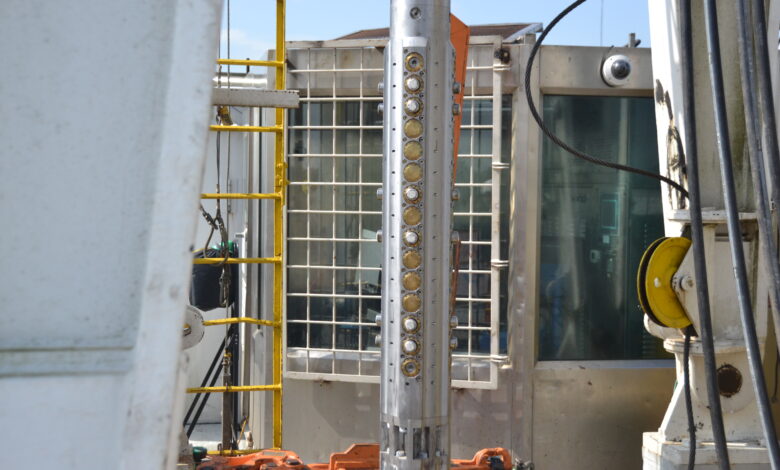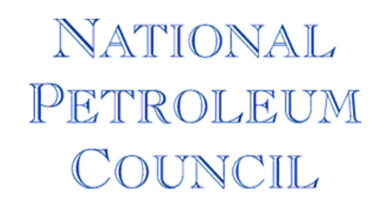New ‘walking’ tool anchors the bit to the rock, aims to mitigate stick/slip by preventing buildup of reactive torque downhole
Technology is being developed primarily with geothermal drilling in mind; prototype was recently tested on Nabors land rig


By Stephen Whitfield, Associate Editor
Geothermal energy is an increasingly popular entry point into the renewable space for drilling contractors, as it can be accessed using conventional drilling rigs and equipment. However, deploying geothermal drilling at scale remains a challenge because, in much of the world, the high-temperature rocks needed to produce geothermal energy are located too deep beneath the Earth’s surface for conventional drill bits to reach effectively.
GA Drilling – which attracted $8 million in investment from Nabors Industries last year – has been working on a new tool to help drillers make deeper holes in hard formations with greater efficiency. The Anchorbit walking system aims to mitigate stick/slip, which is a common factor hindering effective drilling in geothermal formations.
“All the things we’re working on are aimed at the goal of drilling deeper into hotter rocks, where the higher energy is and which is typically igneous and metamorphic rocks,” said Brad Ivie, VP of Engineering at GA Drilling.
The Anchorbit system consists of two sets of extendable pistons installed above the mud motor that are designed to grip the formation as the bit moves downhole. Weight on bit is provided conventionally from the drillstring, and the pistons act in concert during drilling: While the lower set of pistons grips the wellbore wall, the upper set moves downhole. At the end of a stroke, the upper pistons extend and the lower pistons retract, essentially “walking” downhole.
By effectively anchoring the bit to the rock, the tool absorbs the reactive torque generated by the bit and prevents it from building up in the drillstring – stick/slip occurs when that reactive torque releases, causing the drillstring to unwind and the bit RPM to speed up.
The tool also keeps drillers from having to decrease the weight on bit, a common method to mitigate stick/slip, Mr Ivie said. “If we’re going to drill in these hard rocks, we need to put more weight on the bit so you can take a bigger depth of cut. If you spin it too fast, in a lot of these rocks, you’re going to wear the bit quickly. But the problem with putting a lot of weight on the bit is the torsional vibration. When you’re going laterally into the rock, you lose a lot of energy, and the drill pipe can get very flexible. It’s very inefficient to drill that way.”
GA Drilling held a public demonstration of the tool, which has been in development for the past two years, on a land rig at a Nabors’ testing facility in Houston, Texas, on 25 April. The demonstration kicked off a week of proof-of-concept testing of a prototype, showing that the pistons could grip into the wellbore wall and prevent the transmission of force from the bit up the drillstring during the drilling of a test well. The testing also demonstrated the walking capability of the tool, as the pistons transitioned between gripping the formation and moving downhole.
“This is our first chance to show Anchorbit as a viable product that we can bring to market, where we can show full integration with the rig,” said Igor Kocis, CEO of GA Drilling. “We also wanted to test the basic functionality and the limits of the tool to give us information and parameters that we can use to update the design.”
The current prototype can operate in a maximum ambient temperature of 300°F, the minimum temperature of rock required to generate geothermal power, according to the US Energy Information Administration. However, GA Drilling says it aims to increase the tool’s temperature rating to 570°F. The company is also targeting an average ROP of 70 ft/hr for the commercial product.
Mr Kocis said GA Drilling will take the data gathered during the initial field tests and make the necessary design changes. Testing for an updated prototype will likely take place in the second half of 2023 or early 2024, with a finalized version of the tool coming afterwards.
Nabors’ investment in GA Drilling came on the heels of previously announced partnerships with three other geothermal companies: Geo-Z Energy, SAGE Geosystems and Quaise. Nabors has also provided its rigs and equipment to GA Drilling for tool development and testing.
Nabors’ experience in working with other geothermal companies has given the drilling contractor valuable insights, Mr Kocis said, which has been valuable in helping GA Drilling develop its new tools.
“We’re basically connecting with a new technology world, working with a company that is really experienced in how to get from this stage that we’re in now with the tool into the market,” he said. “Our vision is to help make geothermal anywhere a reality. To have a partner like Nabors, with a lot of rigs where you can do these projects, is really helpful for us.” DC



